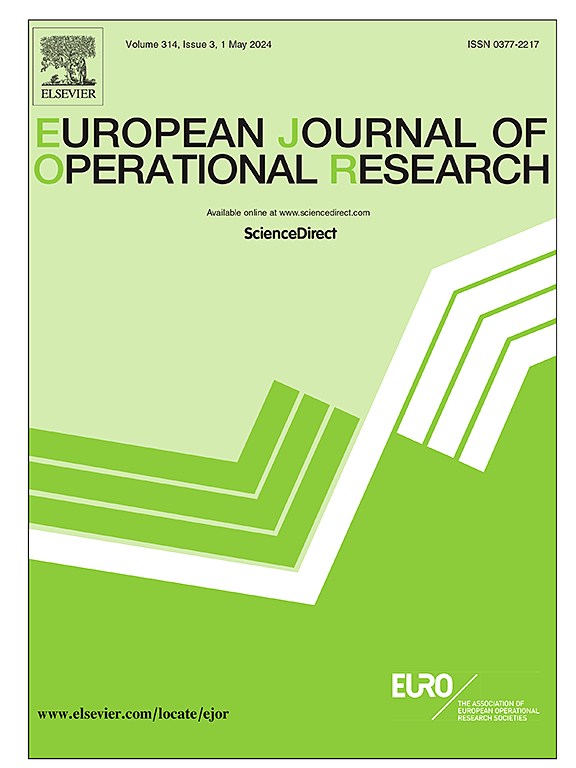Strategic financing options in a supply chain facing guarantee shortages and capital constraints under demand uncertainty
IF 6
2区 管理学
Q1 OPERATIONS RESEARCH & MANAGEMENT SCIENCE
引用次数: 0
Abstract
When distributors, as small and medium-sized enterprises (SMEs), encounter financial constraints and market uncertainty, manufacturers can offer guarantees and product buyback (credit-buyback-financing strategy, CBF) to mitigate risk and enhance output. Recently, the rise in popularity of third-party guarantee institutions introduces additional options for supply chain members, including coguarantee (credit-coguarantee-financing strategy, CCF) or a combination of coguarantee and buyback (credit-coguarantee-buyback-financing strategy, CCBF). To determine the optimal financing strategy, this paper scrutinizes the efficiencies and profitability associated with these three formats within an analytical framework. We find that the downstream distributor always favors CCBF, while the manufacturer’s inclination shifts from CBF to CCF/CCBF as the buyback price decreases (he prefers CCF when the coguarantee share is high; prefers CCBF otherwise). The guarantee institution mirrors the manufacturer’s choices, expressing a preference for CCF when the buyback price is high and the coguarantee share is moderate. Especially, a Pareto improvement is achievable for three partners by employing CCBF under certain conditions. In this case, CCBF induces an appropriate guarantee fee rate, promoting order quantities without excessive default risk, thereby benefiting all parties involved. These results provide valuable insights for managers in identifying a financing strategy that facilitates a triple-win situation.
需求不确定性下面临担保短缺和资本约束的供应链战略融资选择
当经销商作为中小企业遇到资金约束和市场不确定性时,制造商可以提供担保和产品回购(信用回购融资策略,CBF)来降低风险,提高产量。最近,第三方担保机构的普及为供应链成员提供了额外的选择,包括共同担保(信贷-共同担保-融资策略,CCF)或共同担保与回购的结合(信贷-共同担保-回购-融资策略,CCBF)。为了确定最优融资策略,本文在分析框架内仔细检查了与这三种格式相关的效率和盈利能力。我们发现,下游经销商始终倾向于CCBF,而随着回购价格的降低,制造商的倾向从CBF转向CCF/CCBF(当共同担保份额较高时,他更倾向于CCF;首选CCBF,否则)。担保机构反映了制造商的选择,当回购价格高且共同担保份额适中时,担保机构表现出对CCF的偏好。特别是,在一定条件下,利用CCBF可以实现三个伙伴的Pareto改进。在这种情况下,CCBF诱导了一个适当的担保费率,在不存在过大违约风险的情况下促进了订单数量,从而使各方都受益。这些结果为管理者确定有利于三赢局面的融资策略提供了有价值的见解。
本文章由计算机程序翻译,如有差异,请以英文原文为准。
求助全文
约1分钟内获得全文
求助全文
来源期刊

European Journal of Operational Research
管理科学-运筹学与管理科学
CiteScore
11.90
自引率
9.40%
发文量
786
审稿时长
8.2 months
期刊介绍:
The European Journal of Operational Research (EJOR) publishes high quality, original papers that contribute to the methodology of operational research (OR) and to the practice of decision making.
 求助内容:
求助内容: 应助结果提醒方式:
应助结果提醒方式:


